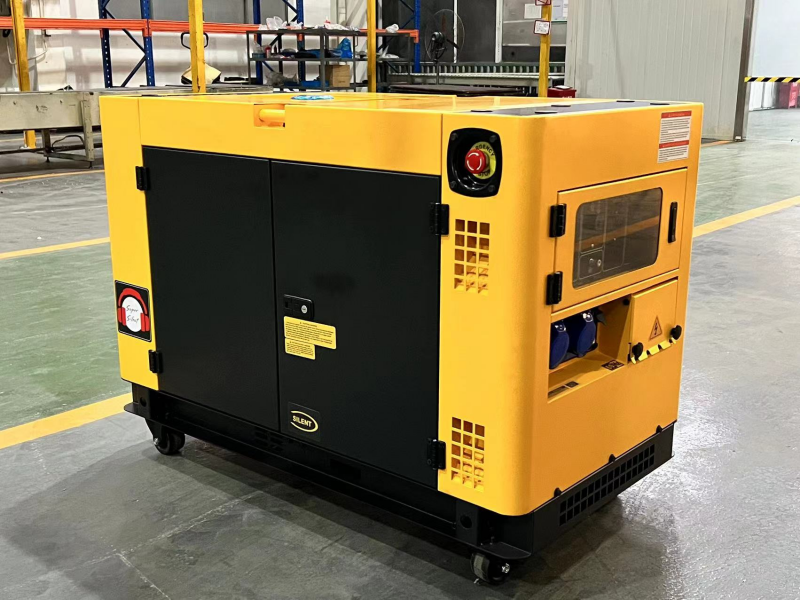For site workers who rely on a steady power supply in their daily operations, selecting the right diesel generator is a crucial decision. The choice between a single-cylinder and a two-cylinder diesel generator can significantly impact job site efficiency and productivity. In this guide, we explore the key considerations for site workers when making this decision, providing insights into the factors that matter most.
Understanding the Basics
A. Single-Cylinder Diesel Generators:
Defined by a single piston, these generators offer simplicity in design.
Compact and cost-effective, they are suitable for smaller job sites with moderate power needs.
Typically exhibit higher fuel efficiency at lower power loads.
B. Two-Cylinder Diesel Generators:
Boasting two pistons working in tandem, these generators provide enhanced power output.
Known for smoother operation with reduced vibrations.
Suitable for larger job sites and applications with higher power demands.
Assessing Power Requirements
A. Identifying Job Site Power Needs:
Evaluate the total wattage required to run tools, equipment, and other electrical devices.
Consider both peak and continuous power demands during various phases of work.
B. Single-Cylinder for Moderate Power:
Opt for a single-cylinder generator if the job site has moderate power requirements.
Ideal for smaller tools, lighting, and essential equipment.
C. Two-Cylinder for Higher Power Demands:
Choose a two-cylinder generator for larger job sites with higher power demands.
Suitable for running heavy machinery, multiple tools simultaneously, and powering larger equipment.
Spatial Considerations
A. Evaluating Available Space:
Assess the physical dimensions of the job site and available space for generator installation.
Single-cylinder generators are more compact, making them suitable for sites with limited space.
B. Single-Cylinder for Compact Sites:
Optimize space with a single-cylinder generator in confined job site environments.
Ensure easy maneuverability and placement within tight spaces.
C. Two-Cylinder for Larger Sites:
Choose a two-cylinder generator for expansive job sites with ample space.
Take advantage of the enhanced power output without compromising on spatial efficiency.
Budgetary Considerations
A. Analyzing Initial Costs:
Compare the upfront costs of both single-cylinder and two-cylinder generators.
Consider the budget constraints of the job site.
B. Long-Term Cost Analysis:
Evaluate long-term maintenance expenses for each generator type.
Factor in fuel efficiency and operational costs over the lifespan of the generator.
C. Single-Cylinder for Budget-Conscious Sites:
Opt for a single-cylinder generator if initial costs and ongoing expenses are primary concerns.
Ensure cost-effective power solutions for smaller projects.
D. Two-Cylinder for High-Power Efficiency:
Choose a two-cylinder generator for larger budgets and projects that demand higher power efficiency.
Benefit from increased durability and performance over time.
Considering Durability and Reliability
A. Single-Cylinder Reliability:
Single-cylinder generators are known for their simplicity and reliability.
Well-suited for less demanding job sites where consistent power is essential.
B. Two-Cylinder Robustness:
Two-cylinder generators offer increased durability and stability.
Optimal for job sites with heavy machinery and constant power demands.
VI. Tailoring the Choice to Specific Applications:
A. Job Site Diversity:
Assess the diversity of tasks and applications on the job site.
Consider whether a versatile single-cylinder generator or a powerful two-cylinder generator is more suitable.
B. Adapting to Project Phases:
Evaluate how power needs may change throughout different project phases.
Choose a generator that can adapt to varying power requirements.
As a site worker, the choice between a single-cylinder and a two-cylinder diesel generator hinges on a careful evaluation of specific needs. By understanding power requirements, spatial constraints, budget considerations, and the nature of the job site, workers can make informed decisions that enhance efficiency and productivity. Whether opting for the simplicity of a single-cylinder generator or the power-packed performance of a two-cylinder counterpart, the right choice ensures a reliable and consistent power supply to meet the demands of the job at hand.
Post time: Feb-27-2024







